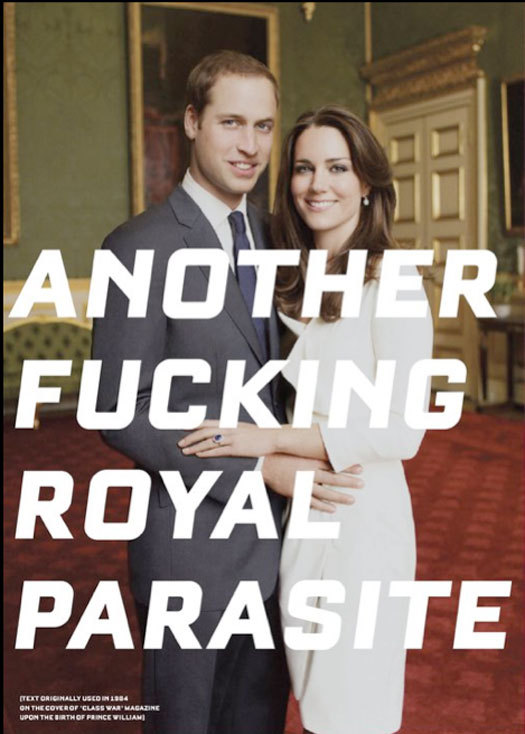
Long criticized for not being relevant in contemporary culture, the British royal family announces the engagement of the future King of England in 144 characters, including a hyphen.
Today, the wedding will be watched by millions on television screens all over the world. It is the stuff of movies and fairy tales: Princes marrying Princesses, horse-drawn carriages, castles and churches and Pageantry — yes, with a Capital P. It is outdated and irrelevant and costly and elitist, a spectacle that fuels a level of prurient spectatorship like nothing else.
And it's nothing new.
The summer after I graduated from Yale, I was walking through Notting Hill one evening when the church bells suddenly rang out: every bell in the city, it seemed, was ringing forth. Pub doors sprang open, people were shouting and singing, and suddenly, there was this kind of mad, tsunami-like sweep of celebratory joy.
Princess Diana had given birth to her first child: a boy, who they named William.
I was a recently-minted college graduate with no job, loitering in London, putting off my return home to the United States and the reality of my imminent unemployment while Diana, then about my age, had produced an heir to the British throne.
But reality is not always kind, and fairy tales don't always persist. Like most of the planet, I followed along as the most-watched branch of the monarchy grew, as the marriage crumbled, as the “People's Princess” crawled through the muck of it all, only to soar briefly and then meet an untimely, tragic death. William was by then a fledgling adolescent, and my next indelible recollection is of watching him walk, with his father and brother, behind his mother's casket. He was tall now, and suddenly, by the force of circumstance, more visibly mature.
My memory fast-forwards here through a lot of toothy grins and pictures of polo-playing, some helicopter patrol duty, and suddenly, the talk of prospective brides for the Prince of Wales — most of whom had enviable great British names (Jecca! Arabella!) and hyphenated surnames (Isabella Anstruther-Gough-Calthorpe!)
And then there was Catherine Middleton, improbably called Kate but not Cate. Talk about photogenic. And a commoner! If ever there was a chance to make the elite, irrelevant monarchy come a bit closer to reality, Ms. Middleton was the ticket.
They date in college. Then break up. Then reunite once more. (Mark one point each for normal relationship woes.)
She shops at civilian stores! They wash their own dishes! (Check. Check.)
And then, the big day: they get engaged!
Kate/Cate wears the famous, massive blue ring originally worn by the long-ago and far-away bashful Diana. The following weeks show Kate in various ensembles (mark another point for tasteful) many of which seem to feature the royal blue of The Ring. Here in the monarchy-free United States, it bears saying that this is a color most often seen during the televised State of the Union, when it is worn by those female members of Congress who choose not to wear bright red. (And let me say right here that I don't now nor have I ever known anyone who actually owned anything in either shade.)
But I digress.
Will the new couple reinvent Royal behavior and re-engage a more down-to-earth demographic? Can they play both sides of the fence, here — the rarified, to-the-manor-born platform of exalted nobility as well as the more normalized, human levels of engagement that characterize most peoples' lives? Can we have our wedding cake and eat it, too? Will Kate/Cate Middleton-Windsor be the new People's Princess?

Jonathan Barnbrook.
